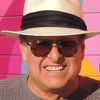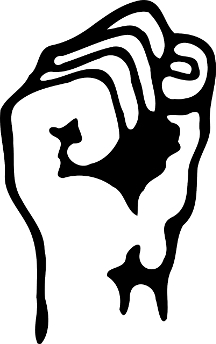As a white teenage civil rights marcher in the 60's, I remember when 'Colored' became 'Black,' and suddenly I was an outsider. It was proposed that if we Caucasians could call ourselves 'White' and take pride in our various European heritages, former Negro slaves could call themselves 'Black' and take pride in their African heritage. However, with that Black and White distinction, an 'us' and 'them' mentality was also implanted.
Black Nationalism
I understood the concept of instilling pride in a people that had never known it, and promoting a feeling of 'community,' as Blacks began referring to themselves as 'brothers' and 'sisters.' But I had a problem with the 'Black Separatism' of Stokely Carmichael, advocating what looked to me like self-ghettoization. However, what 'Black Power' was actually advocating was a form of unionism. Like the labor union struggles with their corporate bosses, the American Negro was fighting for equal rights with the 'White' establishment. And like the labor movement, some chose to negotiate using the system like Dr. Martin Luther King, while others advocated a more militant approach, like The Black Panthers of Huey Newton and Bobby Seale.
Black Muslims
Repudiation of the White Christian majority also found another, more radical voice in the preaching of Elijah Muhammad of The Nation Of Islam (NOI) and his fiery minister Malcolm X. Not to be confused with a Muslim religious sect, NOI could best be described as an anti-Semitic, Black-supremacist, hate group. In fact, when Malcolm X eventually became disillusioned and embraced Sunni Islam, in 1965 he was gunned down by three NOI members.
And Violence Ensued
In 1966, when non-violent James Meredith tried to march for civil rights in Mississippi, he was shot in the back. In Chicago 4,000 National Guardsmen were called in to deal with shootings between police and Negro snipers. At the same time gangs of blacks, whites and Puerto Ricans rumbled in the streets of East New York, and in Cleveland, a young Negro mother was killed by police, triggering a series of riots.
Black and Proud
In early 1968, James Brown sang, "Say It Loud... I'm Black and I'm Proud," proudly proclaiming what civil rights leaders hoped would be a self-fulfilling prophesy. As the single hit number one on the national R&B Charts, and Brown stopped chemically straightening his hair in favor of a large bouncing Afro, a young generation began to do the same, embracing the new pop phrase 'Black Is Beautiful!' When the song also reached the Top 10 on the Billboard Hot 100 it started to feel like we might all sing together.
Martin Luther King Assassination
Then in April of 1968, The Rev. Martin Luther King was murdered in Memphis and the country exploded. In Chicago, 5,000 federal troops were dispatched to quell the sniping gunfire, street fighting and raging fires. Five died in Baltimore where Governor Spiro Agnew ordered 6,000 National Guardsmen in to arrest over 500 looters. A White graduate student was pulled from his car and stabbed to death while attempting to drive through a Black area of Cincinnati, and entire sections of the nation's capital went up in flames. The real damage was deep within the nation's soul as we lost another leader to a cancerous genetic human defect; a reminder that beneath the bandages and restraints of civilization, we're just animals that tend to kill our own. Within a week, the Civil Rights Act of 1968 was signed into law in an attempt to cauterize the wound. But as a practical matter, hate and distrust continued to ooze in Black and White and would fester for years to come.
So Where Are We Today?
Since history is no longer taught in our schools, as noted in my previous "Lessons Unlearned," current generations are probably ignorant of the contracted racial disease beneath the violence and distrust bubbling once again to the surface. Perhaps exacerbated with the election of our first Black President, virtually emasculated by an obstructionist opposition, that then blamed him for getting nothing done. But despite the setbacks, change may still be coming. In ubiquitous camera eyes, like our chant in 1968 Chicago, when Mayor Daley's helmeted pigs attacked us on camera, "The whole world is watching!" Police and bigots can no longer cover-up blatant criminal use of force and violence. Meanwhile, as Republicans face the karma of their Twittering non-presidential candidate, Obama is getting in his last licks by executive order, saving 'the Dreamers' and pardoning hundreds of predominantly Black casualties of the disastrous 'War On Drugs.' Then there's the music... Although James Brown, Marvin Gaye and the Motown Sound was a prominent voice of the 60's, today's urban music of Beyonce, Kanye West, Drake, Rihanna, etc. is the predominant music of the day, with teenage earplugs universally plugged in to the urban messages embedded in the lyrics. What's more, the gap between rich and poor is no longer Black and White. With a large segment of the White middle class now also struggling to get by, the dysfunctional corporate controlled government and political system has become our mutual problem... perhaps, with the current groundswell of disenchantment, to be challenged and solved together.
L.E. Kalikow's book "Sex, No Drugs & Rock'N'Roll (Memoirs Of A Music Junkie)" is available as a papaerback, eBook, iBook, and AudioBook online and through LEKalikow.com.

